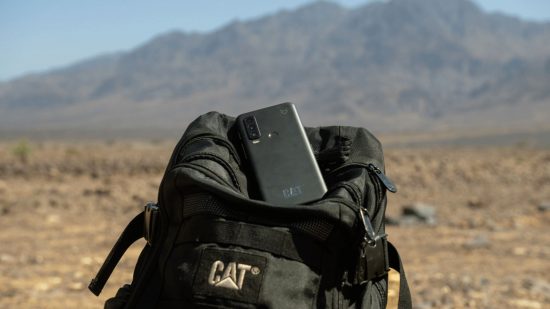When Apple announced a satellite service for iPhone, it seemed like a bit of a bolt from the blue. You can send a text via a satellite if you’re in danger and have no signal, which is pretty cool. But anyone with more than one eye on this tech may have noticed that it’s been a long time coming. Android satellite connectivity is a thing, and Bullitt, maker of some of the best rugged smartphones, has been working on it for years.
The new developments in Bullitt’s tech aren’t massively new – the hardware news is the same as it was at MWC 2023. The company launched the CAT S75 in February, which, of course, has satellite connectivity, as well as the Motorola Defy sat link, which, in spite of the name, isn’t a phone. It’s just a little rugged puck that connects to your iPhone or Android phone to beam some waves up to a satellite and help you out in a jam.
What Bullitt is bringing to the table is a wider range of services. Right now, users can text folks in an app and contact emergency services, all via satellite. To improve this Bullitt is bringing satellite tracking – which pinpoints your location every minute or so – which a friend can track online to make sure you’re following the planned route (good for harsh conditions or a wildlife meetup, perhaps).
This comes alongside improvements to the app overall, like letting you block users before they reach out to you, as well as plans to bring satellite coverage to even more users. Right now, only Europe and the US are covered – Bullitt wants to bring this global, with Canada, South America, Oceania, and Africa all in the works over the coming months. Restrictions in China makes that unlikely, while the war makes Russia a no-go.

We learned a lot of interesting things about this tech in Berlin, but perhaps most interesting is the sorts of people who use the service. I always assumed it’d just be mountain climbers and the like, but Bullitt is covering numerous other people, like folks who live in remote areas or have to work in them. It’s almost a forgotten bit of the connectivity landscape – that someone fixing a cell tower likely needs cell signal themselves – and Bullitt is pushing to solve it.
Of course, this doesn’t come from some kindness of heart – it does cost money. It starts at $4.99 a month for a basic plan and goes all the way up to $29.99 a month for a bunch more messages and data. We’ve got a Motorola Defy in for review, too, so we’re putting on our walking boots and getting out into the wild to test it out – keep your eyes peeled for that in the future.
Either way, Android satellite connectivity is already here – just some folks didn’t notice or don’t care. Of course, there’s likely a tsunami of incoming sat-enabled phones – with Qualcomm and Samsung’s Exynos chips set to bring the ability to more devices. There’s even a partnership between Starlink and T-Mobile that could bring it to any 5G-enabled phone, though with all the controversy around that, who knows if it will be a reality, let alone when.
The unique thing with Bullitt is the service is already up and running, and making use of MediaTek’s standalone chipsets – meaning it’s a chipset that could work with a Qualcomm CPU, for example. Still, out of all the best Android phones, none have the feature yet. The CAT S75, Motorola Defy 2 smartphone, and Motorola Defy sat-link are the only Android options if my research is correct. It’s a little window into a new world of connectivity.
